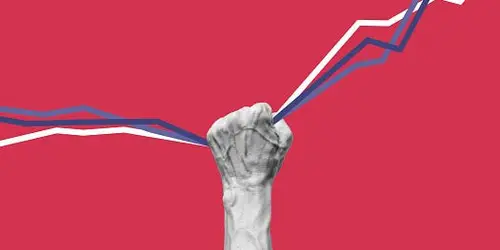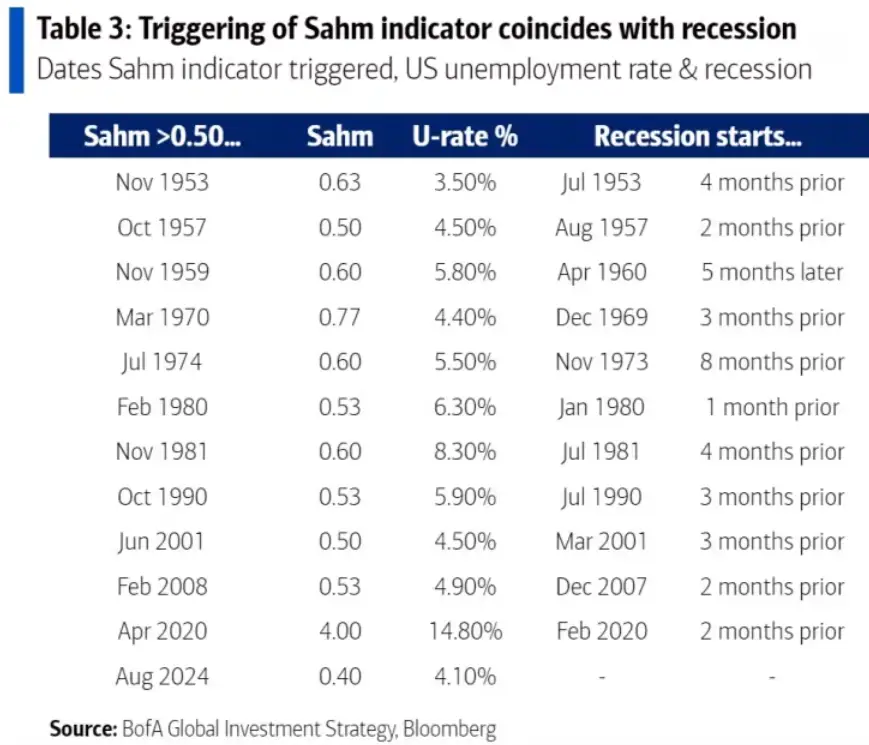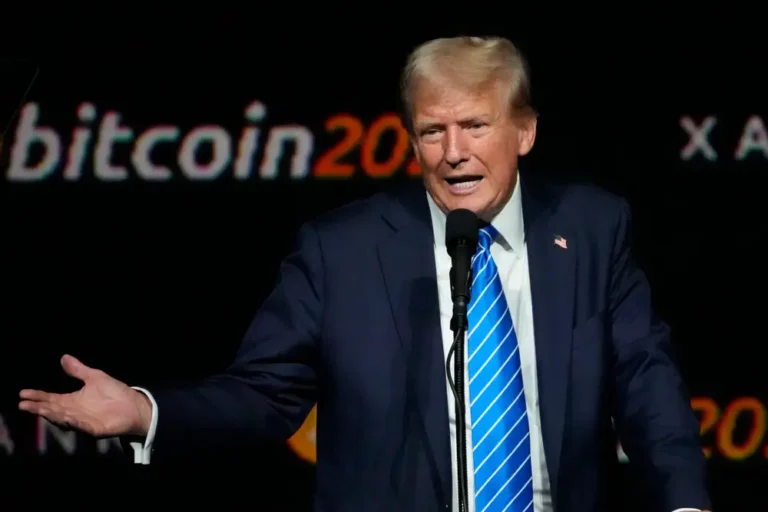Surging US unemployment has triggered a recession indicator with a perfect track record

A closely watched recession indicator flashed on Friday after a weak July jobs report showed an unexpected surge in the unemployment rate.
The US economy added 114,000 jobs in July, badly missing economist estimates of 175,000, while the unemployment rate — which was forecasted to stay flat — rose to 4.3% from 4.1%.
The Sahm Rule, created by former Federal Reserve official Claudia Sahm, triggers when the unemployment rate’s three-month moving average moves 50 basis points above its 12-month low.
That rule was triggered on Friday, with the moving average rising 53 basis points above that one-year trough, according to the real-time Sahm Rule Recession Indicator from the St. Louis Federal Reserve.
And that’s ultimately an ominous sign for the broader US economy, as the Sahm Rule has been remarkably accurate in predicting an imminent downturn.
Since 1953 and excluding today’s trigger, the Sahm Rule has flashed 11 times, and in 10 of those 11 times the economy was already in a recession. The only misfire for the rule was in 1959, but even then, a recession started just five months after the Sahm Rule flashed.

“The triggering of the Sahm rule and increase in the unemployment rate will add to concerns that the economy is weakening more than expected in the second half of 2024,” economist Bill Adams of Comerica Bank said in an e-mail to B-17. “Our assessment of the risk of a recession over the next 12 months is higher than it was before these data were released.”
But Sahm herself wrote in a Substack post last week that “the rise in the unemployment rate is not as ominous as it would normally seem.”
She said earlier this year that if her rule was to ever fail in predicting a recession, this might be the time.
That’s because much of the rise in the unemployment rate over the past year hasn’t been driven by job layoffs, but rather by an increase in labor supply due to immigration trends.
“The Sahm rule is likely overstating the labor market’s weakening due to unusual shifts in labor supply caused by the pandemic and immigration,” she said.
Sahm added: “Dramatic shifts in the labor force, including the plunge in participation early in the pandemic and then the jump in immigration in recent years, are likely affecting the change in the unemployment rate in a way that would not be typical in prior business cycles.”
The former Fed official did say that the risk of a recession in the next several months is elevated, but that should force the US central bank to cut interest rates, which could help alleviate some recessionary pressures.
While Sahm may not be concerned about an imminent recession this time around, investors sure are, with the stock market plunging more than 2% on Friday following the weak jobs report.






